Animals may not have lawyers or social media platforms to air their grievances, but their breakup behaviors can be as dramatic as any human divorce. Whether it’s splitting up after a long partnership or battling over the nest, the animal kingdom has its own ways of handling separations that might remind you of some human relationship sagas. Take a look at these 14 animal breakup behaviors that mirror human divorce drama and see if you recognize any patterns.
1. Swans: The Painful Breakup
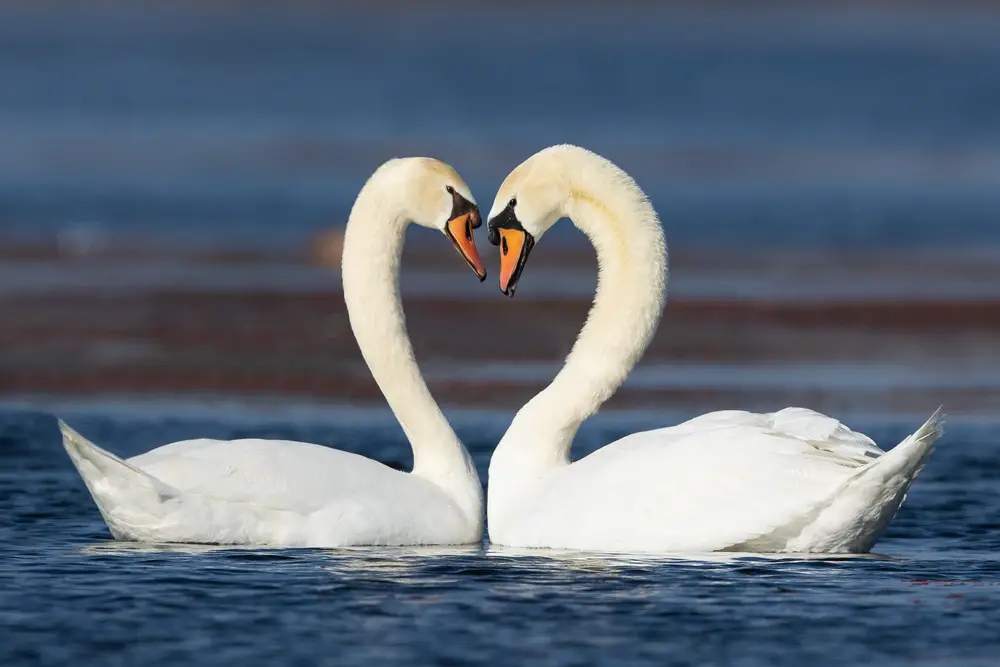
Swans are often celebrated for their lifelong partnerships, but even these graceful birds can decide to part ways. When a swan pair breaks up, it’s not uncommon for both to feel the effects deeply. They may swim in separate parts of their lake or even leave their territory entirely, seeking new waters and new partners. According to behavioral ecologist Dr. Jane Smith, swans sometimes break up due to environmental pressures, such as a lack of food or safe nesting sites. It’s a stark reminder that external stressors can strain even the most committed of relationships.
For humans, environmental factors can play a significant role in relationship breakdowns, too. Stressful jobs, financial difficulties, or even something as simple as a change in living conditions can push couples apart. Just as swans may drift to different parts of a lake, people might find themselves gravitating to different social circles or activities that better align with their evolving needs. While swans don’t hold grudges or engage in custody battles, their breakups might still leave a lasting impact on their community. Observers might note a change in dynamics, as the once-united front now moves separately through familiar territories.
2. Albatross: The Long-Distance Drama
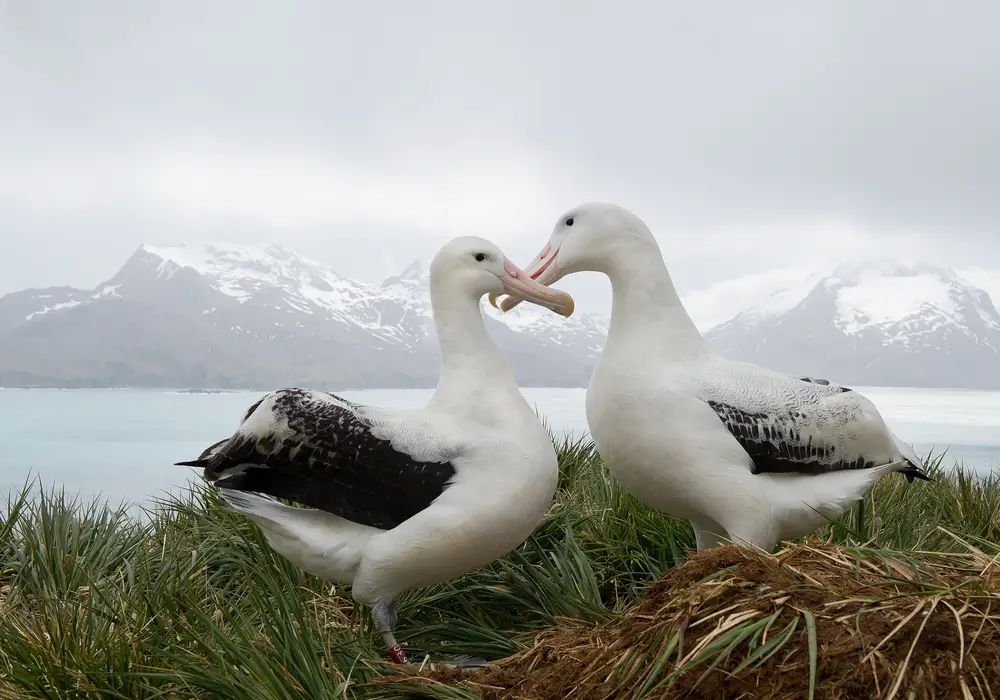
Albatrosses are known for their long-distance relationships, sometimes spending months apart during migration. However, when they reunite on land, it’s not always the romantic comedy you’d expect. If one partner doesn’t return, the other might wait, hoping for a miracle, before ultimately seeking new companionship. These seabirds demonstrate a poignant side of separation, where waiting and hope can both sustain and devastate. The journey of an albatross is a powerful metaphor for the resilience and heartbreak of long-distance romance.
For people, long-distance relationships can be both an opportunity and a challenge. The absence might make the heart grow fonder, or it might lead to drifting apart as lives move in different directions. Just like albatrosses, some couples manage to reunite with stronger bonds, while others may find the distance insurmountable. The challenges of time zones, missed calls, and different life experiences can become barriers. Yet, for those who do reunite, there’s a sense of triumph in having navigated the distance.
3. Praying Mantises: The Messy Breakup
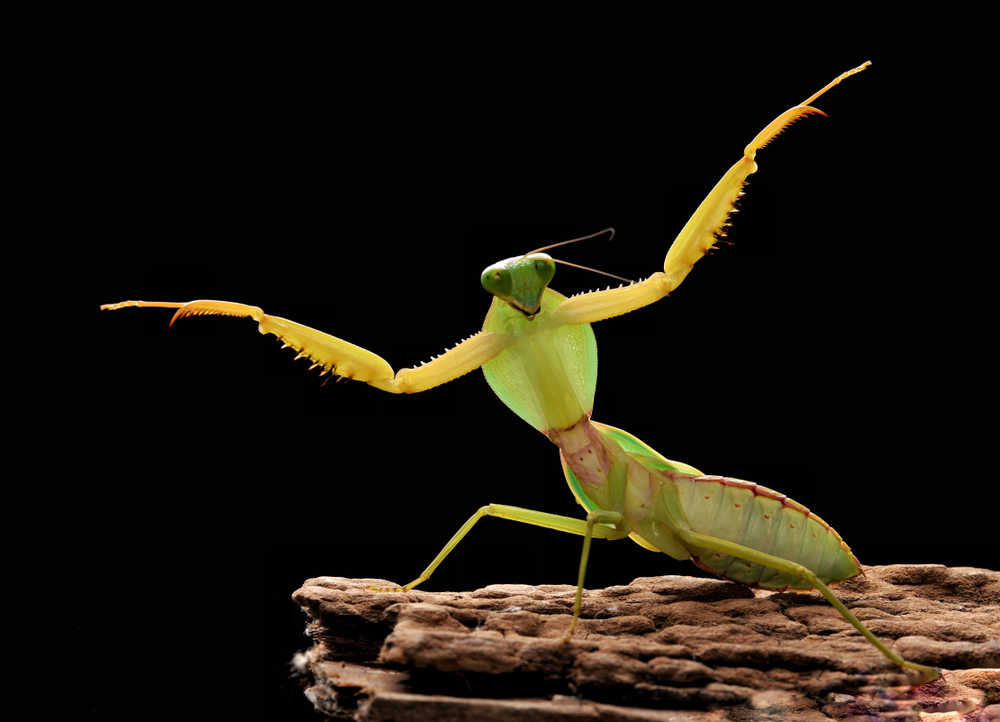
Few animal breakups are as final as those in the world of praying mantises. In a twist of nature that would make even the messiest of human breakups seem tame, female mantises sometimes eat their mates. While it might sound extreme, this behavior has evolved as a way to ensure the survival of their offspring. Zoologist Dr. Mark Johnson explains that this cannibalistic tendency is a survival strategy, giving the female the nutrients she needs post-mating. It’s a harsh, yet effective method that underlines the lengths to which some species will go for the continuation of their line.
For people, the end of a relationship can feel like a fight for survival, albeit in a more emotional sense. Divorce can lead to significant life changes, requiring a reassessment of one’s priorities and resources. While human breakups might not involve physical consumption, the emotional and financial toll can feel similarly consuming. However, unlike mantises, people often have the chance to rebuild and grow stronger post-separation. This resilience is key to moving forward, even when the breakup feels all-consuming.
4. Gibbons: The Pain Of Silence
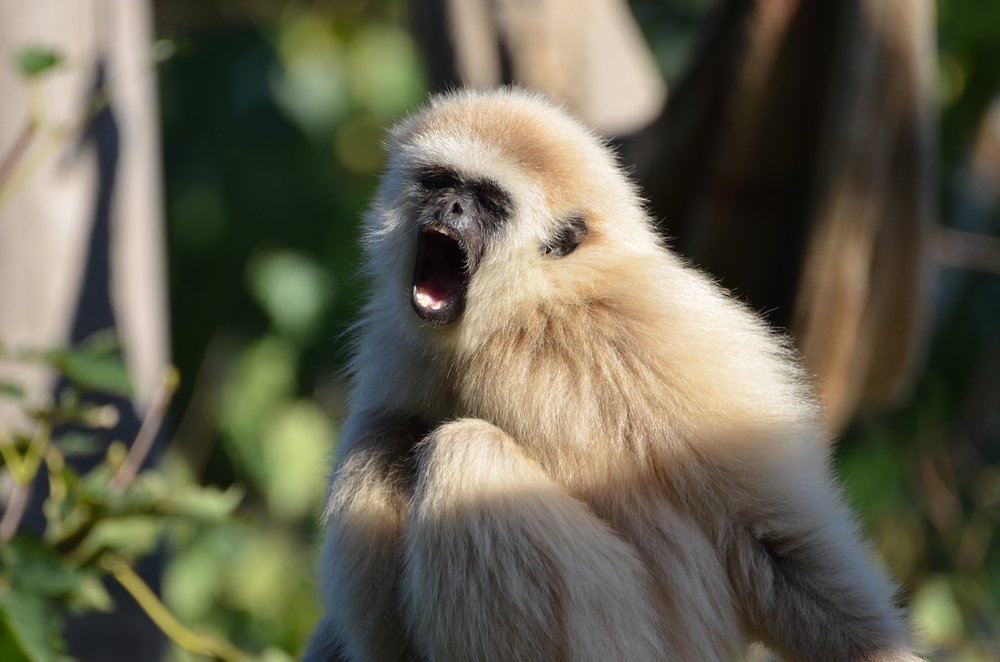
Gibbons are known for their duet singing, a harmonious expression of their bond. But when the music stops, it could signal the end of a partnership. If a gibbon pair isn’t singing together anymore, it’s often a sign that they’ve drifted apart. This silent treatment reflects a breakdown in communication, a common precursor to both animal and human relationship dissolutions. The absence of their song speaks volumes about the distance that has grown between them.
In human relationships, a lack of communication can often signal deeper issues. When partners stop talking, sharing, or connecting in meaningful ways, it can lead to a slow erosion of intimacy and trust. Like the gibbons, some people might find themselves in a relationship that’s gone quiet, where the absence of conversation speaks louder than words. Rebuilding that connection requires effort from both parties, just as gibbons must find new partners to harmonize with once more. The silence may be daunting, but it’s also an opportunity for reflection and growth.
5. Wolves: The Pack Politics

Wolves are known for their intricate social structures, but breakups happen here too, often in the form of pack splits. When two alpha wolves can’t reconcile their differences, it can lead to one leaving the pack, taking some members with them. This division can be seen as a natural response to unresolved conflict and competition for leadership. According to wildlife biologist Dr. Susan Lee, pack splits are comparable to human family dynamics, where power struggles can lead to division (Lee, S. 2021). It’s a testament to how even the most structured communities must adapt to change.
For people, breakups can often involve navigating complex family or group dynamics. Like wolves, humans may find themselves choosing sides, whether intentionally or as a result of internal conflicts. These rifts can lead to lasting divisions, but they also open the door to new beginnings. Just as a wolf might form a new pack, people have the chance to create new support networks. Embracing these changes, rather than resisting them, can be a path to personal growth.
6. Elephants: The Long Memory
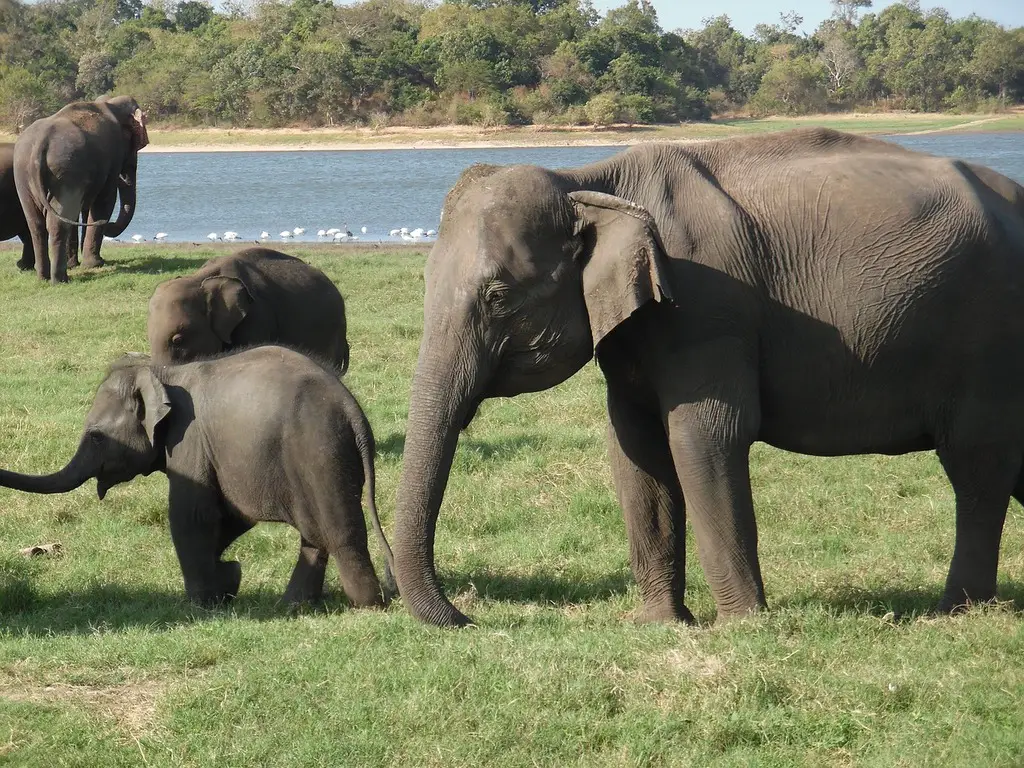
Elephants are legendary for their memories, but this can be a double-edged sword when it comes to breakups. These intelligent giants often form strong bonds, and when they break, the memory lingers. If an elephant loses a partner, it may show signs of distress or depression, visibly mourning the loss. Their behavior underscores the deep emotional connections they form and the impact of their dissolution. It’s a reminder that memory can both heal and haunt in the aftermath of a split.
For people, memory plays a significant role in how they process and move on from breakups. Recollections of shared experiences can be comforting or painful, depending on the context of the separation. Like elephants, humans may find themselves revisiting places or memories that hold significance. The challenge lies in cherishing the positive memories while learning to let go of the hurt. Over time, both elephants and people can find a way to integrate these memories into their new realities.
7. Penguins: The Unmet Expectations
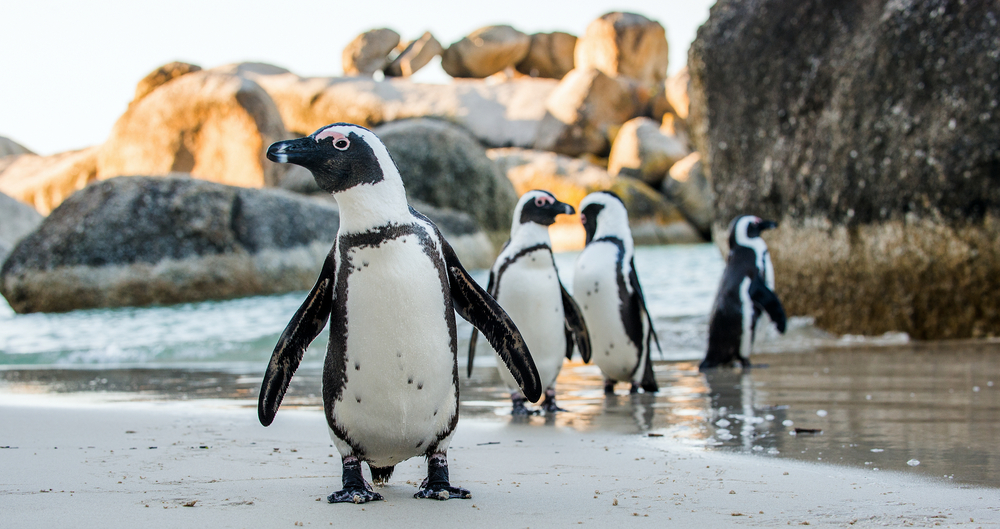
Penguins are often seen as the epitome of loyalty, but even these devoted birds sometimes part ways. When a penguin couple separates, they might have to navigate a complex social landscape as they seek new partners. Dr. Emily Carter, an expert in avian behavior, notes that penguins often split due to breeding failures, which mirrors how reproductive challenges can strain human relationships. The search for a new mate can be competitive, especially in densely populated colonies. It’s a cold reminder that even the most steadfast bonds might face unexpected challenges.
For people, relationship challenges can arise from unmet expectations or life events that change the course of a partnership. Like penguins navigating the ice, humans might find themselves treading carefully through social circles when seeking new connections. The end of a relationship can feel isolating, but it’s also an opportunity to rediscover one’s desires and priorities. Embracing change, despite the uncertainty, can lead to new and fulfilling relationships. Just as penguins find new mates, people can forge new paths and connections.
8. Frogs: The Leap Into The Unknown
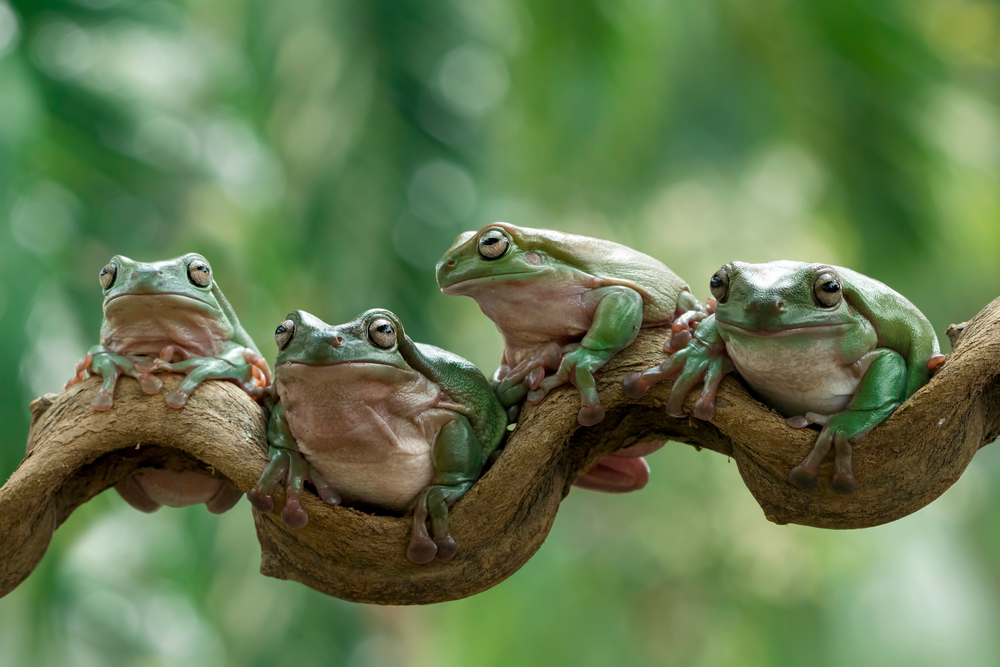
Frogs might not seem complicated, but their mating habits can involve some surprising twists. When a frog couple breaks up, it’s often the male who moves on in search of a new mate. This leap into the unknown can be a gamble, as finding a suitable partner isn’t guaranteed. The male frog’s journey reflects the risks and rewards of starting over after a relationship ends. It’s a bold leap, but one that’s necessary for growth and survival.
In human terms, the end of a relationship can feel like a leap into the unknown. Whether it’s moving to a new city, changing jobs, or exploring new interests, the aftermath of a breakup can be both daunting and exhilarating. Like frogs, people might face setbacks or challenges along the way. However, these experiences can lead to personal growth and unexpected opportunities. The choice to start anew is both a challenge and a chance to redefine one’s path.
9. Lions: The Roar Of Rejection
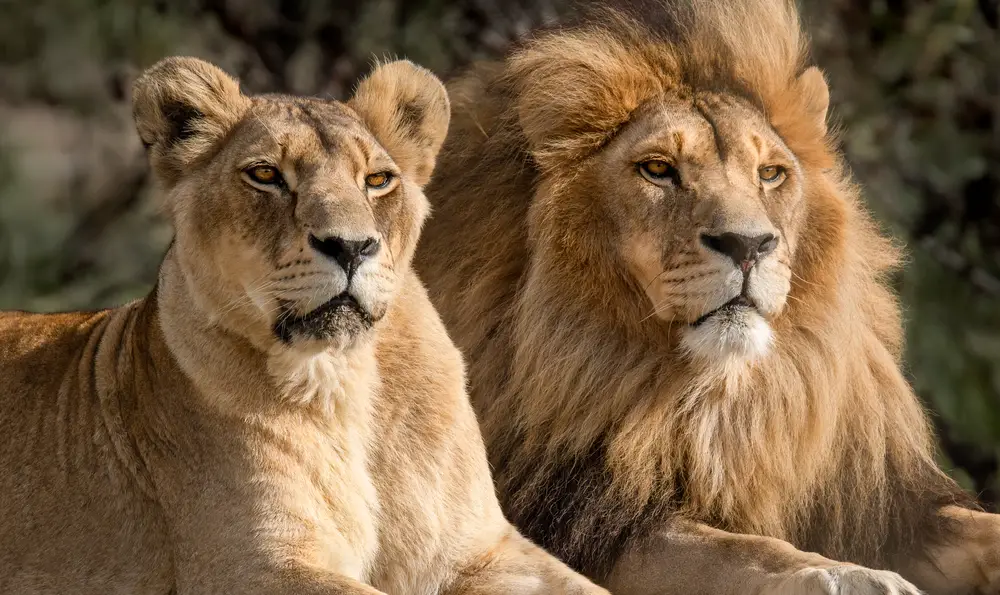
Within a lion pride, breakups can occur when a new male challenges the existing leader. If the incumbent male is defeated, he often leaves the pride, sometimes with a few lionesses in tow. This power shift can lead to new alliances and the birth of a new generation. The roar of rejection signals a change in leadership and the start of a new chapter. It’s a dramatic, yet natural part of life in the savannah.
For people, power dynamics can play a significant role in relationships and their eventual breakdown. Whether it’s a shift in career status, family responsibilities, or personal ambitions, changes in power can create tension. Like lions, people may experience a shift in their social or familial structures, leading to new dynamics. These changes can be challenging but also present opportunities for growth and new beginnings. Embracing the inherent instability of life can lead to unexpected rewards.
10. Octopuses: The Sudden Ending
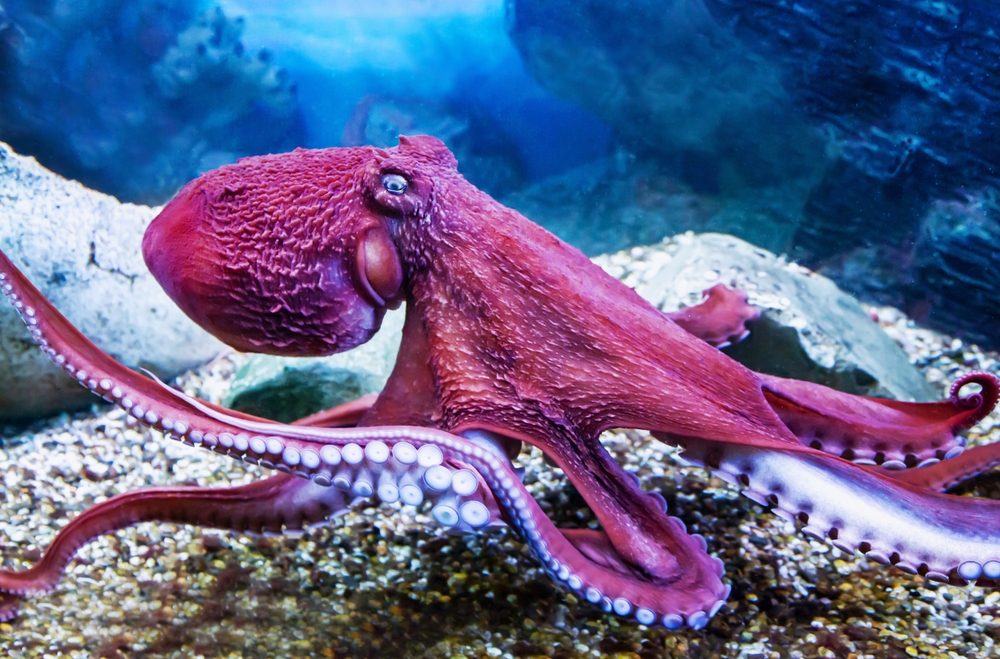
Octopuses are solitary creatures, and their breakups can be as swift as their courtships. Once mating is complete, partners often part ways immediately, each going their separate way. This departure highlights the transient nature of their relationships, where connection is brief but intense. The octopus’s ability to adapt quickly to new environments mirrors the human capacity for reinvention after a breakup. It’s a testament to the power of independence and transformation.
For people, the end of a relationship can be an opportunity for reinvention. Like octopuses, humans have the capacity to adapt to new environments, whether that means starting a new job, moving to a different place, or exploring new hobbies. The initial challenge of separation can lead to personal growth and self-discovery. Embracing change, while difficult, can pave the way for a more fulfilling life. The key is to remain open to new possibilities and adventures.
11. Seahorses: The Slow Separation

Seahorses are known for their unique breeding role reversals, but breakups are a part of their work,d too. When a seahorse couple splits, it often involves drifting apart rather than a dramatic showdown. This slow separation can be attributed to changes in their environment or compatibility issues. It’s a subtle process, highlighting how relationships can naturally dissolve over time. The seahorse’s quiet parting is a reminder that not all breakups need to be loud or contentious.
For people, relationships can end quietly, with both parties simply growing apart over time. Like seahorses, humans might find that changing circumstances or evolving interests lead to a gradual separation. This type of breakup, while less dramatic, can still carry its own challenges and emotions. The quiet end of a relationship provides an opportunity for reflection and understanding. Accepting the natural ebb and flow of relationships can lead to a more peaceful resolution.
12. Meerkats: The Social Tensions
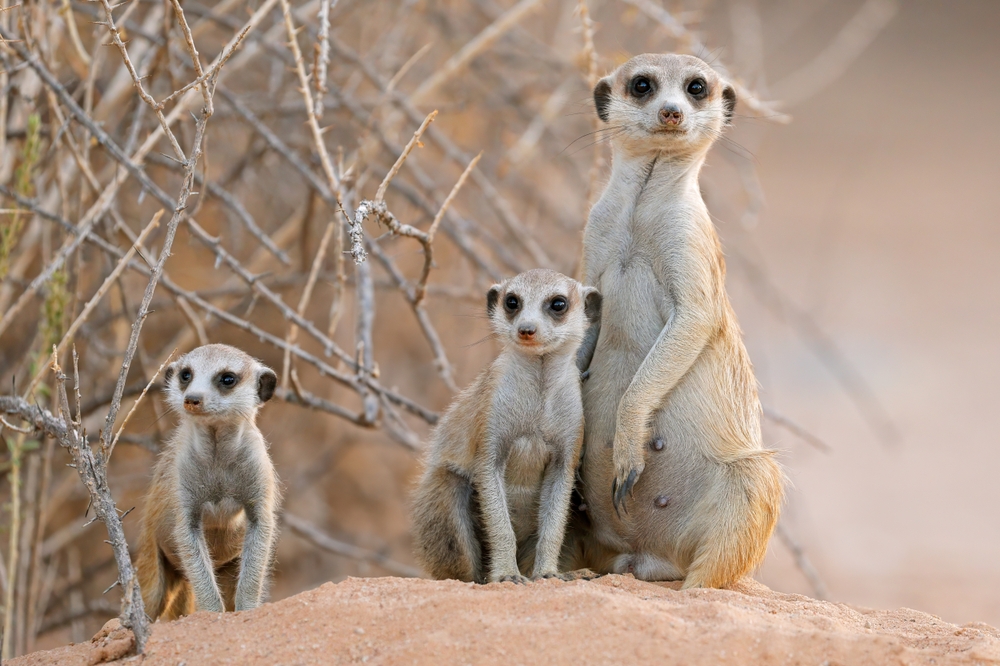
Meerkats are social creatures, but their groups can experience tension and breakup dynamics. When disputes arise, it’s not uncommon for a meerkat to leave the group and join another. This social shift can be influenced by competition, hierarchy, and resource availability. The melodrama of meerkat society parallels human social groups where conflicts can lead to realignment. It’s a reminder of how complex social dynamics can influence relationships.
For people, social tensions can arise in various forms, from workplace dynamics to family disputes. Like meerkats, humans might find themselves reevaluating their social connections and seeking new environments. These shifts, while challenging, offer a chance to find more compatible groups and form new bonds. Navigating social tensions requires communication, understanding, and an openness to change. The ability to adapt and thrive in new social settings is a valuable skill for both meerkats and humans.
13. Beavers: The Property Disputes
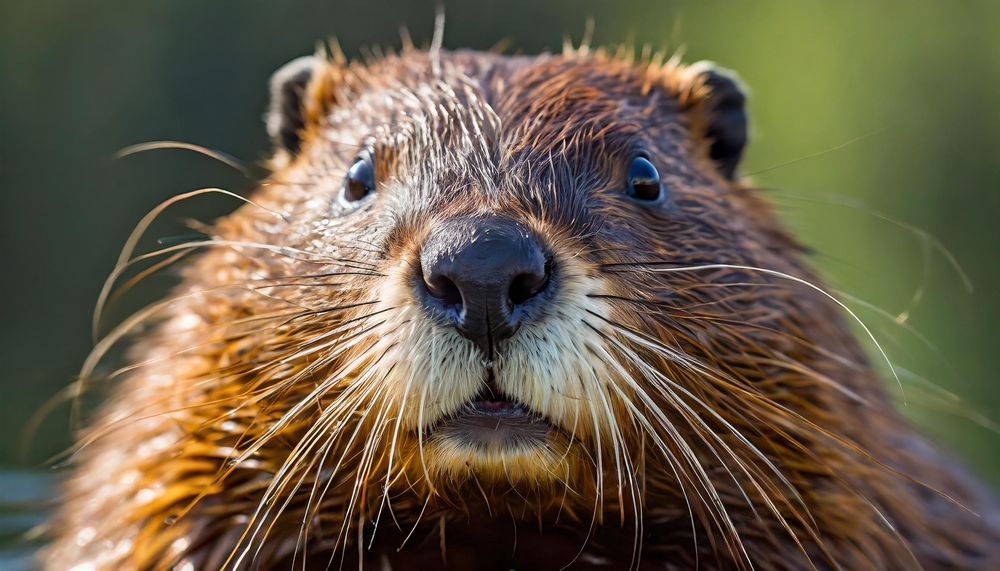
Beavers are known for their industrious nature and the dams they build, but breakups can occur when partners disagree over construction plans. A beaver couple might part ways if they can’t agree on the location or size of their dam. This kind of dispute highlights how shared projects can become points of contention in relationships. It’s a reminder that common goals, when misaligned, can lead to division. The dissolution of a beaver partnership over dam disputes echoes the human experience of conflicting ambitions.
For people, shared projects or goals can be a source of connection or conflict. Like beavers, humans might find themselves at odds over plans, whether they involve career moves, family planning, or financial decisions. These differences can challenge even the strongest relationships, leading to reevaluation and change. The ability to negotiate and compromise is crucial in navigating these disputes. Understanding and addressing these differences early on can prevent larger conflicts.
14. Chimpanzees: The Battle To Reclaim Status
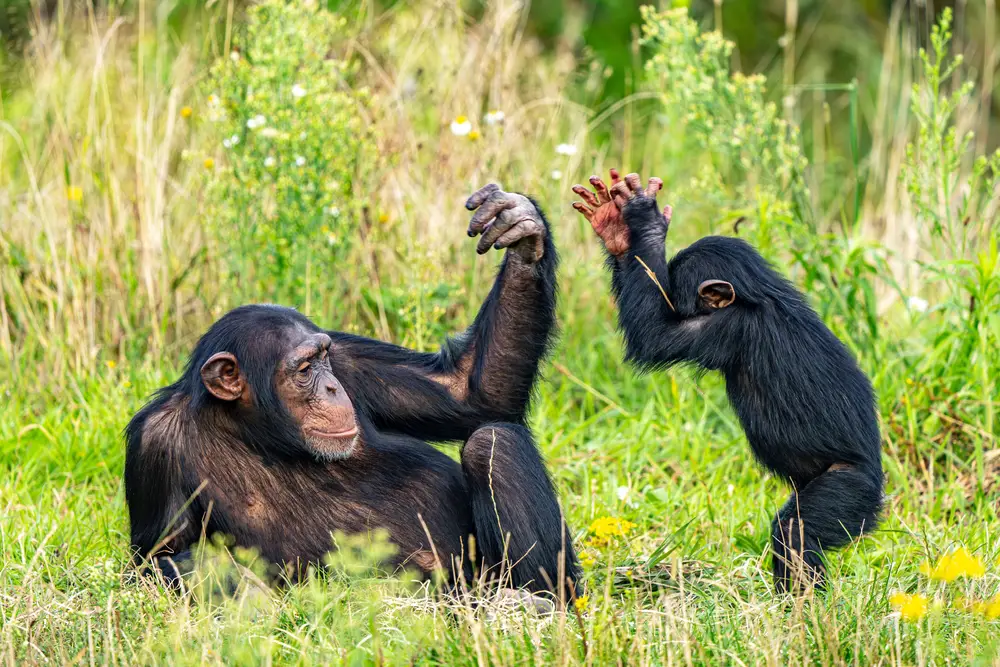
Chimpanzees are highly social animals, and their group dynamics can lead to breakups when tensions escalate. A chimp may break away from its group if conflicts arise over resources or social status. These clashes can lead to new alliances and the reshaping of social hierarchies. The battle for bonds in the chimpanzee community mirrors human experiences of social competition and change. It’s a testament to the complexities of navigating social relationships.
For people, social conflicts can lead to changes in friendships, social circles, or professional networks. Like chimpanzees, humans might find that competition or differing values lead to the dissolution of certain relationships. These changes can be challenging, but also present opportunities for new connections and growth. Embracing the fluid nature of social dynamics allows for greater resilience and adaptability. The ability to navigate and thrive in changing social landscapes is essential for both chimpanzees and humans alike.
